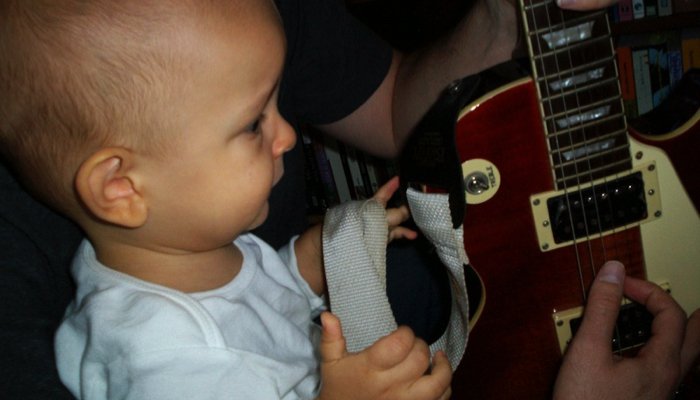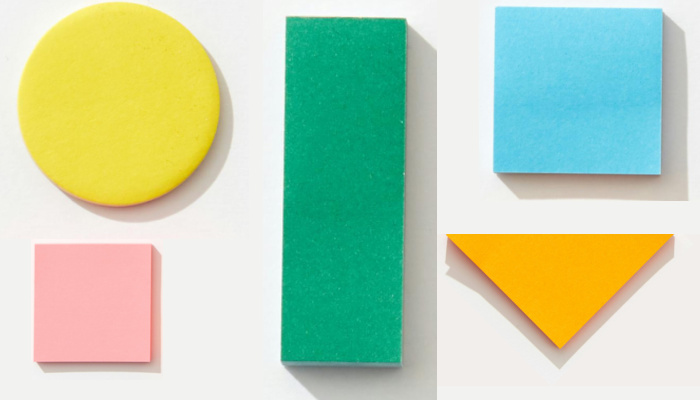Music as Motivator for our Visually Impaired Kids

Music can be a great way to stimulate a visually impaired baby, but where do you begin?
We’ll give you some practical ways to incorporate music into your little one’s day…
Getting Around
Music is a wonderful resource for your blind baby, but be sure to use it carefully and deliberately. Since blind children need to learn how to orient themselves in their environment, they need to rely on their other senses to figure out what’s going on in the room.
For example, you may not even notice the ticking clock or humming refrigerator, but your child can learn to use these noises as clues that she’s in the living room or the kitchen. If music is incessantly playing in the background, important noises (like the clock or refrigerator) may be muffled and your child may not learn how to hone in on the important sounds.
On the other hand, you can use music to orient your child, too. For example, if your child is playing out in the yard, you can place a stereo or radio in the window so he’ll know which direction the house is in. Or maybe dad always listens to the radio while he works. Your child will begin to recognize that the room with music is dad’s office.
As your blind baby learns about depth and space, you can walk through the house pointing out different smells and noises and teaching him that each room is different. One great exercise is to play music in one room, then walk in and out of that room. Your baby can learn that you are moving in and then out of the room by listening to the music get louder and quieter.
Sing Together
All children, both blind and sighted, love to sing and mimic what they hear. I’m sure you’ve heard kids singing along to cartoon theme songs or commercial jingles they hear on TV or the radio.
While this may be fun at first, blind children are often unable to break out of the mimic stage and end up repeating songs and phrases over and over without really understanding the meaning of what they’re saying. This is called echolalia and you can learn more about it here. Rather than allowing your child to pick up and repeat pointless songs, teach her meaningful songs that will encourage language and growth. Songs like Head and Shoulders,Knees and Toes teach body awareness and the names of body parts. Here are more songs to sing with your child:
All of these songs link to Songs for Teaching, a great site where you can listen to the song, read the lyrics, and purchase the CD.
- Hip-Hop Around the Clock: Learn to tell time.
- Ten in the Bed: A counting song. Encourage your child to jump, roll, or “fall” (or bounce your baby on your knee) while you sing.
- Simon Says: Teach your child to follow directions.
- Hands Up for Letter Sounds: Teaches the letters and their sounds.
Let’s Play!
 Playing with instruments is an excellent way to improve your baby’s fine motor skills. Don’t expect him to play anything melodic just yet, but do encourage him to feel, grasp, bang, or pluck at any number of instruments.
Playing with instruments is an excellent way to improve your baby’s fine motor skills. Don’t expect him to play anything melodic just yet, but do encourage him to feel, grasp, bang, or pluck at any number of instruments.
Our son has been playing with a mini piano and an ukulele since he was about three months old. He really loves his piano and has gotten very good at feeling out the individual keys. Our Physical Therapist and Vision Specialist both use his piano as incentive when they are playing with him and they attribute his finger dexterity to this play.
Instruments, like a piano, are also a great way to teach cause and effect. When your baby bangs the keys, they make a sound. Eventually, he’ll figure out that he is making that sound himself. This is a very important concept.
Also, make sure that when you are playing with an instrument that it doesn’t just appear and disappear into thin air – your blind baby can’t see the object come and go. Play a few notes on the piano as you bring the keyboard to your baby, then do the same as you take it away. This will teach him that objects move through space, that things don’t simply appear out of nowhere, and it may also encourage him to reach out for the expected toy.
Don’t be Scared!
You can use Music to encourage an unmotivated child or calm a distressed child. For example, if you’re introducing your visually impaired child to a new environment, it may seem frightening to her.
Try placing her in a comfortable corner with a stereo playing soothing music set between her and the rest of the room. Lower the volume gradually until she becomes accustomed to the new noises in the room.
Let’s Move About
You can also use music to play games that will encourage your child to explore her environment. Here are a few ideas:
- Hide a musical toy or a stereo somewhere in the room and have your child find it.
- Have your child find an object before the music stops.
- Go about the house or neighborhood and record sounds. Take your tape of recorded sounds home and see if you can identify them.
- Sing a song about objects in the room and have your child find the object. Describe the object in your song but don’t name it. Think of it as a musical scavenger hunt!
Have Fun!
Music is a wonderful way to play with a blind baby or child because it encourages listening and moving. Use music throughout your developmental plan, but remember the most important thing…
Related Posts

Visual Impairment
The Gift of Understanding: How a Young Child Helps His Blind Father Navigate Life
When a parent is blind, it’s natural for people to wonder how their sighted child will adapt. Will they struggle to understand their parent’s needs? Will they feel burdened by...

Braille and Literacy, Toys, Visual Impairment
24 Braille Toys for Kids Who are Blind
Everything from alphabet blocks to raised line coloring pages and activity books to puzzles to card and board games... and so much more! And it's all in braille ready for...

Tactile Arts and Crafts, Visual Impairment
Using Origami to Teach Blind and Low-Vision Students Basic Shapes
If, like me, you have wondered why it is important for young students to learn about shapes, here are just a few reasons. Teaching shapes in early education provides children...